Abstract
Recognition of the biomedical concepts in a document is prerequisite to further processing of the document: medical educators examine curricular documents to discover the coverage of certain topics, detect unwanted redundancies, integrate new content, and delete old content; and clinicians are concerned with terms in patient medical records for purposes ranging from creation of an electronic medical record to identification of medical literature relevant to a particular case. POSTDOC (POSTprocessor of DOCuments) is a computer application that (1) accepts as input a free-text, ASCII-formatted document and uses the Unified Medical Language System (UMLS) Metathesaurus to recognize relevant main concept terms; (2) provides term co-occurrence data and thus is able to identify potentially increasing correlations among concepts within the document; and (3) retrieves references from MEDLINE files based on user identification of relevant subjects. This paper describes a formative evaluation of POSTDOC's ability to recognize UMLS Metathesaurus biomedical concepts in medical school lecture outlines. The "precision" and "recall" varied over a wide range and were deemed not yet acceptable for automated creation of a database of concepts from curricular documents. However, results were good enough to warrant further study and continued system development.
Full text
PDF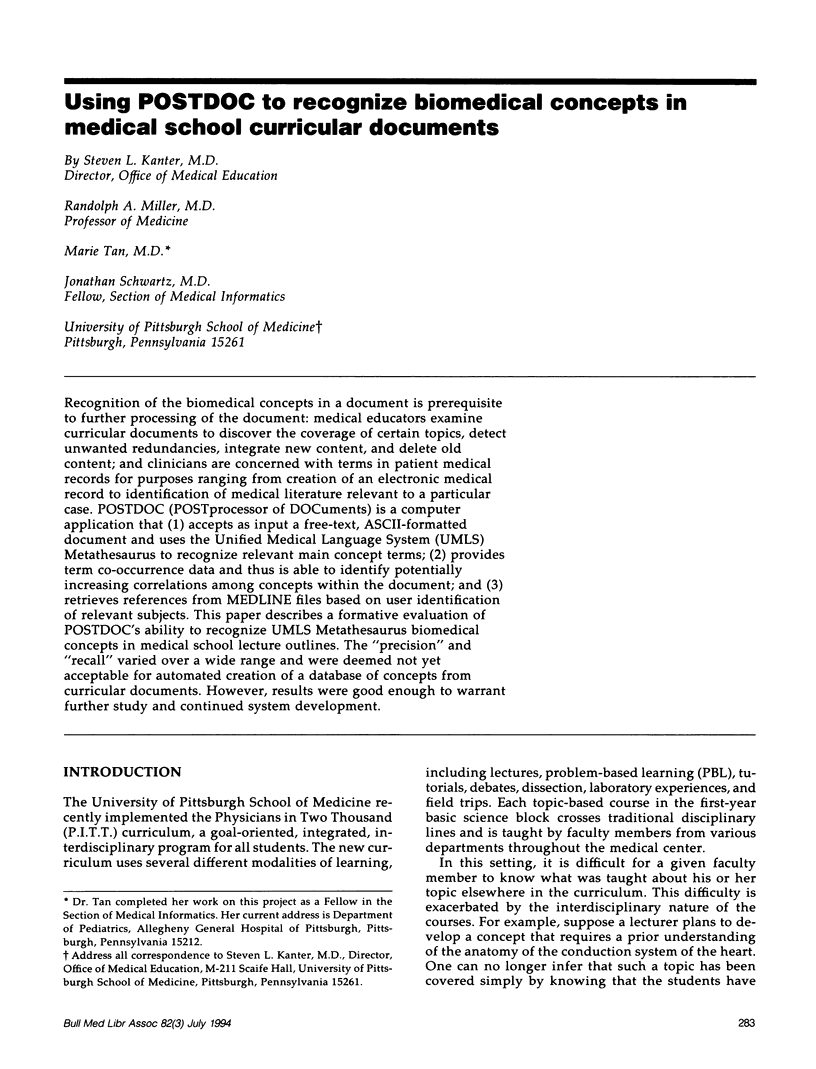
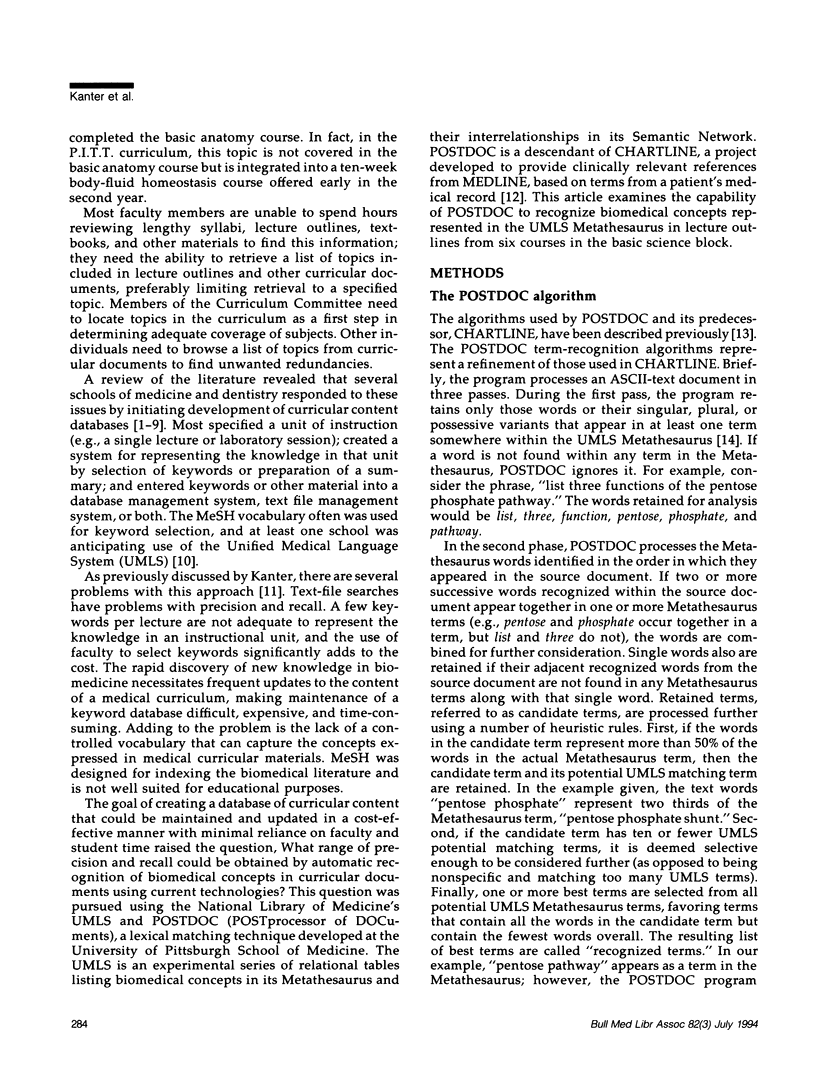
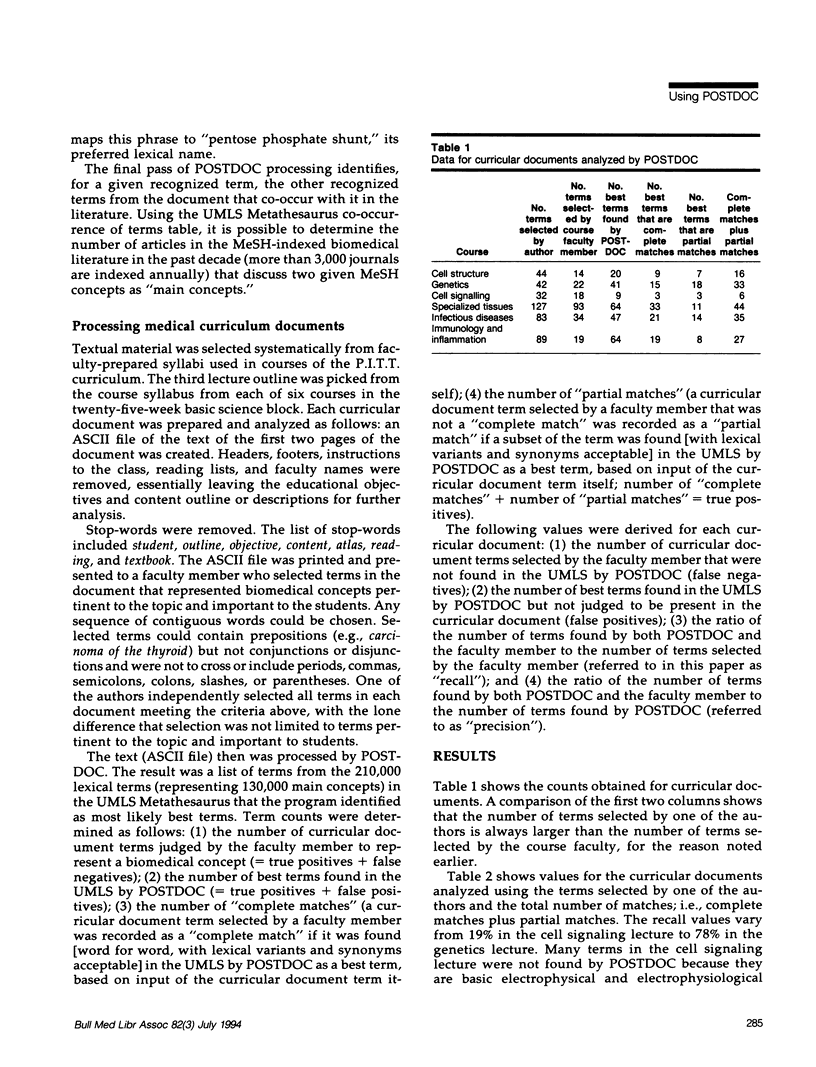
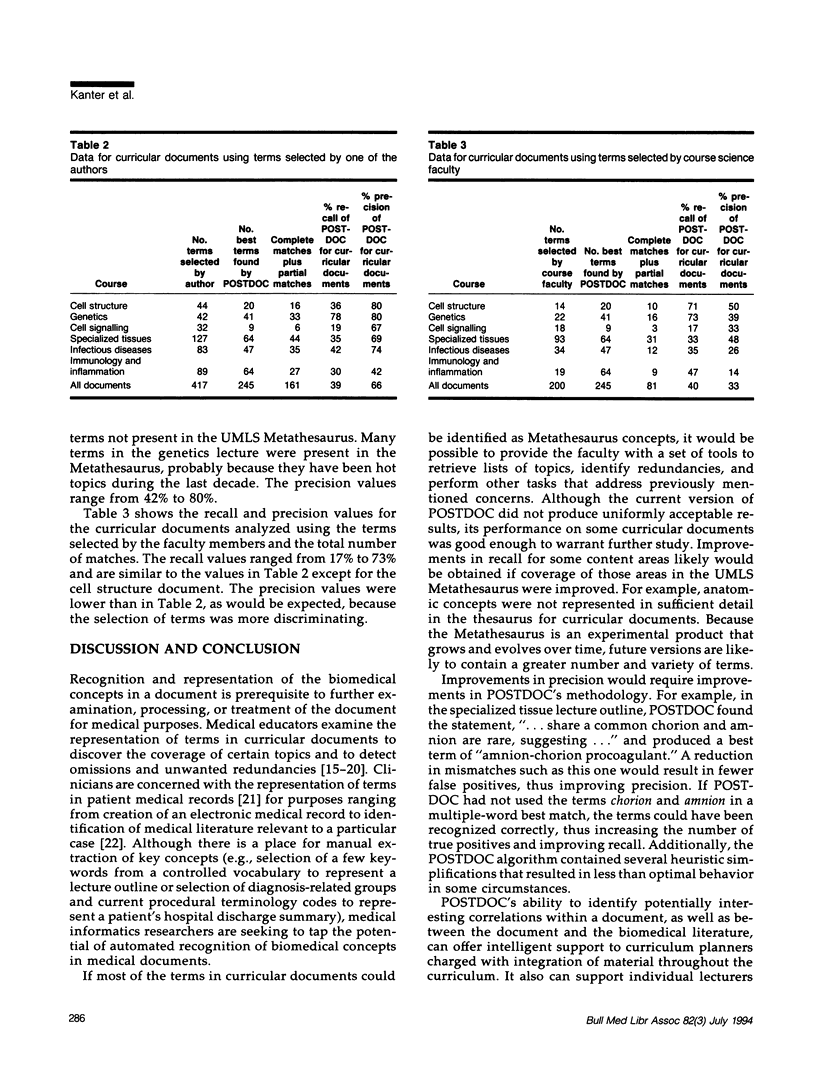
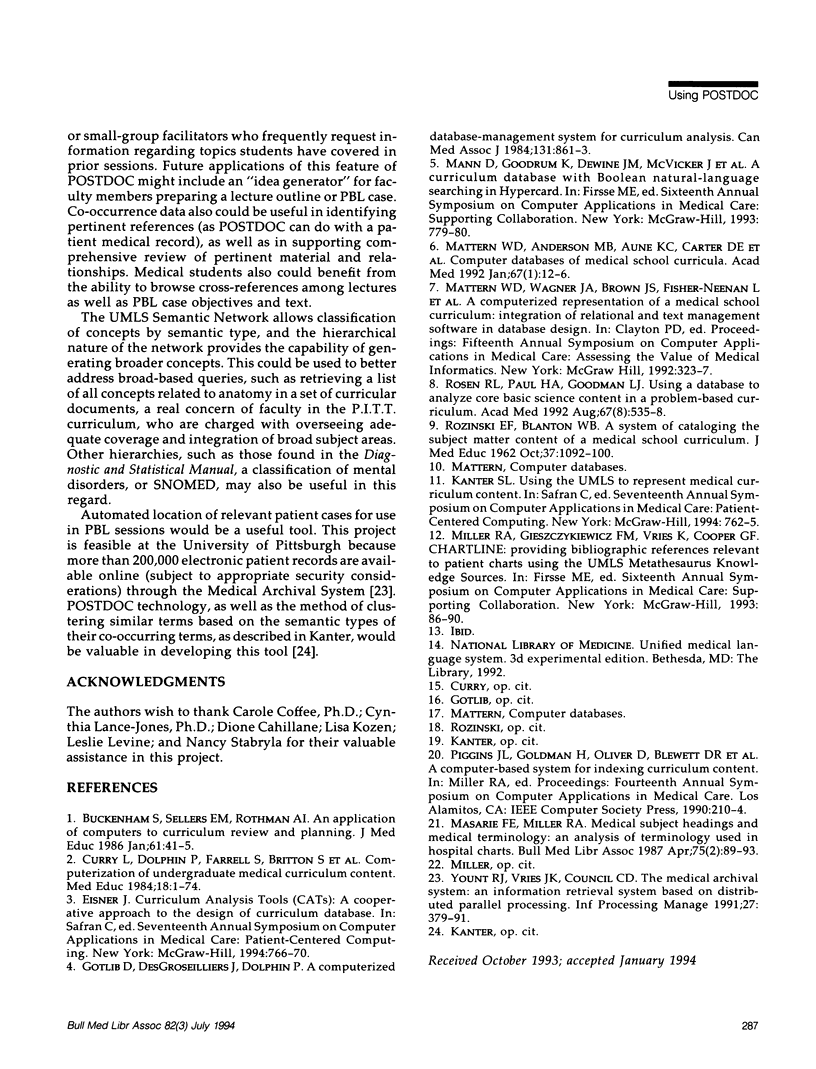
Selected References
These references are in PubMed. This may not be the complete list of references from this article.
- Buckenham S., Sellers E. M., Rothman A. I. An application of computers to curriculum review and planning. J Med Educ. 1986 Jan;61(1):41–45. doi: 10.1097/00001888-198601000-00005. [DOI] [PubMed] [Google Scholar]
- Curry L., Dolphin P., Farrell S., Britton S., Bowden R. Computerization of undergraduate medical curriculum content. Med Educ. 1984 Mar;18(2):71–74. doi: 10.1111/j.1365-2923.1984.tb00975.x. [DOI] [PubMed] [Google Scholar]
- Gotlib D., DesGroseilliers J. P., Dolphin P. A computerized database-management system for curriculum analysis. Can Med Assoc J. 1984 Oct 15;131(8):861–863. [PMC free article] [PubMed] [Google Scholar]
- Masarie F. E., Jr, Miller R. A. Medical Subject Headings and medical terminology: an analysis of terminology used in hospital charts. Bull Med Libr Assoc. 1987 Apr;75(2):89–94. [PMC free article] [PubMed] [Google Scholar]
- Mattern W. D., Anderson M. B., Aune K. C., Carter D. E., Friedman C. P., Kappelman M. M., O'Connell M. T. Computer databases of medical school curricula. Acad Med. 1992 Jan;67(1):12–16. doi: 10.1097/00001888-199201000-00003. [DOI] [PubMed] [Google Scholar]
- ROSINSKI E. F., BLANTON W. B., Jr A system of cataloguing the subject matter content of a medical school curriculum. J Med Educ. 1962 Oct;37:1092–1100. [PubMed] [Google Scholar]
- Rosen R. L., Paul H. A., Goodman L. J. Using a database to analyze core basic science content in a problem-based curriculum. Acad Med. 1992 Aug;67(8):535–538. doi: 10.1097/00001888-199208000-00012. [DOI] [PubMed] [Google Scholar]


